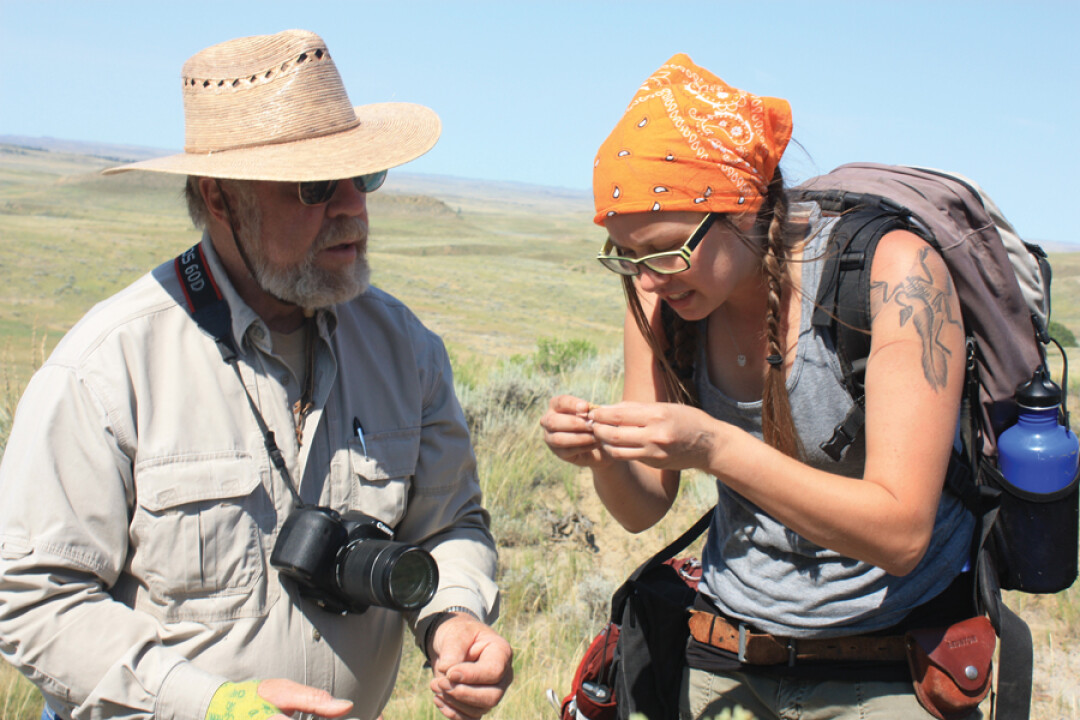Hitting the Road: Heading to the Dino Shindig
Sarah Cairoli | Wednesday Jul. 1st, 2015
The Siren’s song of Montana’s backroads beckons every summer. I’ve lived here for more than a decade, and though I hit the road every summer to explore this great state, I’ve still only seen a small portion. I’ve traveled dusty dirt roads and pitted mountain paths to visit ghost towns and secluded lakes. The possibilities for road trips are endless in Montana, and my husband and I used to spend every weekend exploring all the state has to offer. Then, we had kids.
Suddenly, even an hour in the car required a minimum of 10 snacks, coloring books, toys, stories, and a plethora of distracting electronic gadgets. The whining and constant potty breaks made road trips hardly seem worth it, and like wimps, we gave up. But, the kids are getting older; they can make it a solid three hours with only minimal complaints, so we’ve decided to hit the road again this summer. We’re headed to Ekalaka to become paleontologists during the town’s annual Dino Shindig.
Discovering Dinosaurs
The Dino Shindig takes place the weekend of July 25 and 26, and is sponsored by the Carter County Museum and the Carter County Geological Society. Saturday will be a party the whole family can enjoy. Kids will love watching a hydraulic T-Rex jaw chomp through coconuts and watermelons. They can also dig for replicas of dinosaur bones, get their faces painted, play dinosaur miniature golf, and dress up and get their pictures taken in a photo booth. The Carter County Museum also has several fossilized dinosaur bones that kids (and their parents) can actually touch and hold, according to Kirsten Johnson, the museum’s media director. This is an extremely rare opportunity and worth the price of admission. Actually, it’s an incredible deal because admission for Saturday’s events costs only $3 for kids and $5 for adults.
While the kids get their dinosaur fix, parents will be able to listen to lectures from several world famous paleontologists arriving from all over the country. These experts will discuss extinction theory and the newest discoveries from the Hell Creek formation.
Featured speakers include:
Thomas Holtz - University of Maryland
Thomas Carr - Carthage College
Holly Woodward Ballard - Oklahoma State University
Mary Schweitzer - North Carolina University
Mark Goodwin - University of California Berkeley
Scott Williams - Burpee Museum
These same paleontologists will accompany a group of 50 people to an active dig site on Sunday. This adventure is an additional $70 per person, but that fee allows participants to work alongside the experts and make their own discoveries.
“Over the past two years we have further explored our existing dig sites as well as discovered new ones. In the past, we have had half of the patrons at one dig site and half at another. We would switch sites after serving lunch to our guests. During the course of the day, our paleontologists give informal talks about our sites and answer any and all questions our guests have. We explain how to prospect and how to identify formations and fossils and encourage our guests to explore the area for themselves,” Johnson explained in a recent email.
Participants will receive a t-shirt, as well as i.d. cards and baggies they can use to collect their finds. The Carter County Museum displays interesting Shindig finds along with the names of their discoverers. It’s not every day that someone without any training could become a paleontologist whose finds are on display in a museum. My kids are thrilled at the idea; so thrilled that they are willing to ride in the car for a little over six hours to get from Bozeman to Ekalaka.
Following Clark’s Footsteps
This may be a long haul, so to break up the drive I’ve planned a stop at Pompey’s Pillar outside of Billings. When the Lewis & Clark Expedition was returning to the East Coast, they stopped at the pillar along the Yellowstone River, and William Clark climbed to the top where he carved his initials and the date into the soft stone. Now, visitors can follow in Clark’s footsteps to see his signature and more than 5,000 other etchings inscribed by native people over several centuries.
Clark originally named the large rock Pomp’s Tower. Pomp was the nickname he used for Sacagawea’s son, little Baptiste Charbonneau. In Sacagawea’s native Shoshoni language, Pompy means little chief. Pomp’s Tower was renamed as Pompey’s Pillar when an account of the Lewis and Clark Expedition was published in 1814, according to the Bureau of Land Management. The site was designated as a National Monument in 2001.
This historic landmark is 25 miles east of Billings on I-94 (exit 23), so it is the perfect halfway point between Bozeman and Ekalaka. A hike to the top of the tower to see Clark’s signature will be a great way to stretch our legs. The view from atop the 150 foot high sandstone mesa is breathtaking. A picnic lunch alongside Pompey’s Pillar Creek should give us the energy we need to make it to the Dino Shindig.
This road trip will allow us to reflect on all of the beings that have traversed Montana’s vast landscape over the centuries. We will learn about the ancient dinosaurs that inhabited this place when it was an ecosystem very different from the one we enjoy today. We will learn about great explorers whose bravery led them through unknown territory. We will learn about native cultures, like Sacagawea’s, that lived off this land and treated it with the utmost respect. And, most likely, we’ll learn about ourselves and how we can play a part in the continuation of Montana’s great legacy.
| Tweet |
